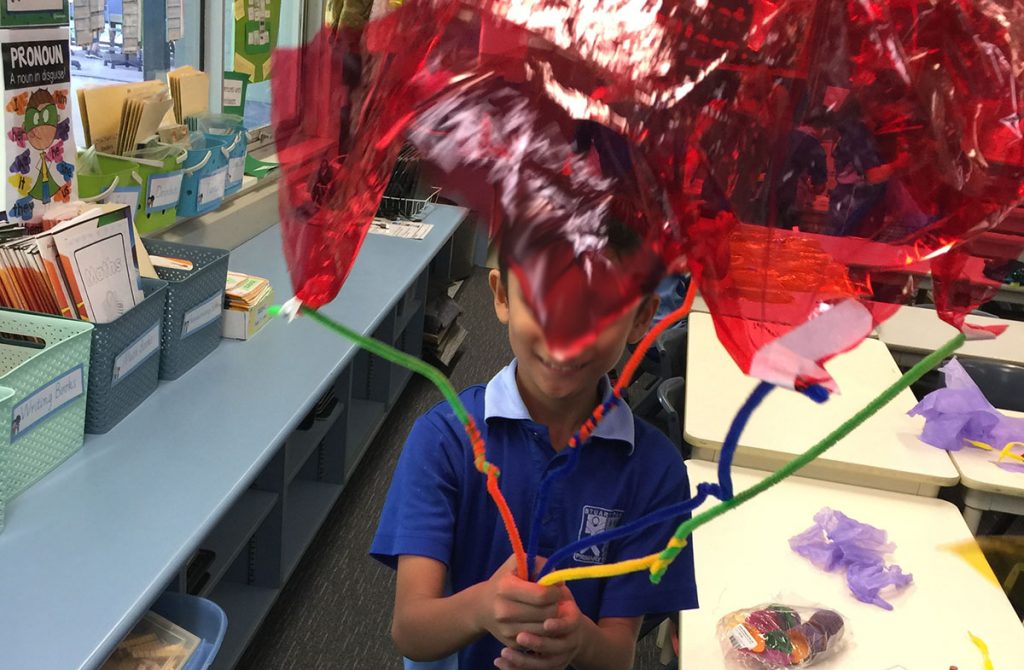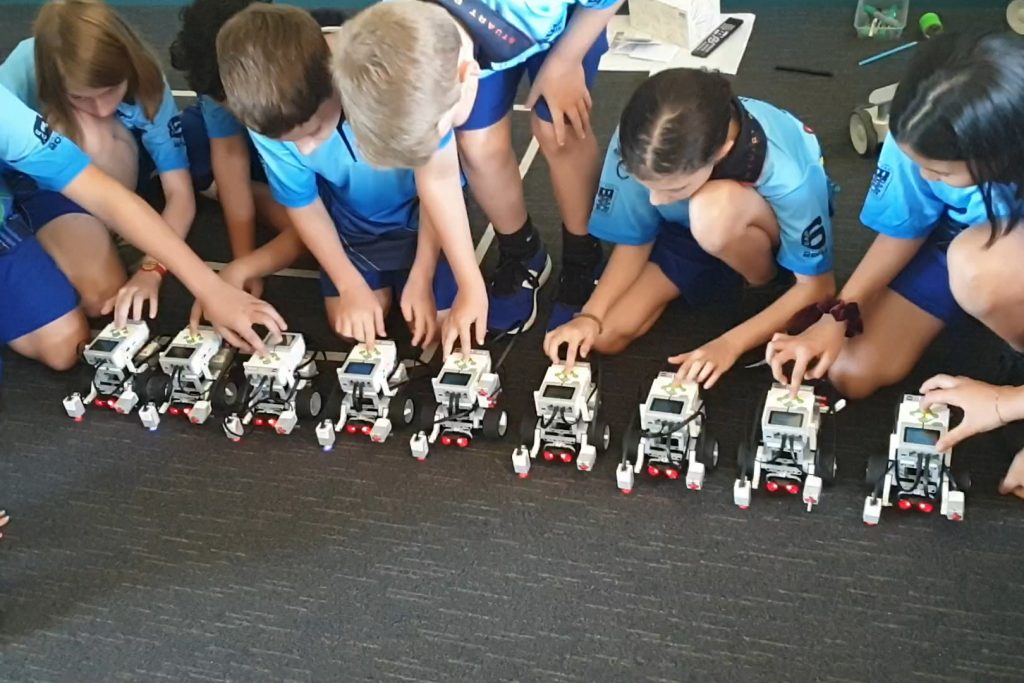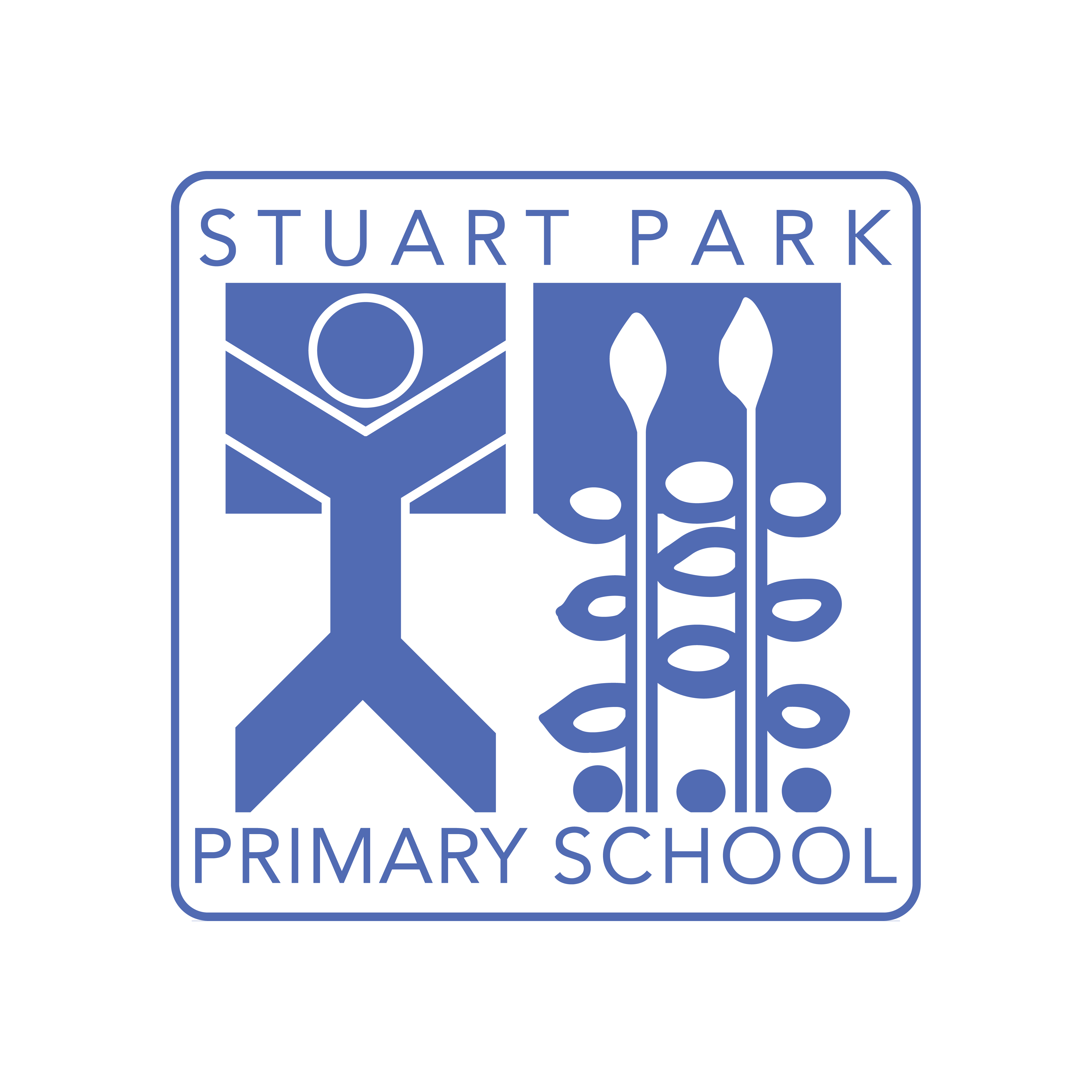


STEAM
STEAM is an educational approach to learning that uses Science, Technology, Engineering, the Arts and Mathematics in an integrated way. Rather than teach the five areas as separate subjects, STEAM integrates them into a cohesive learning program based on real-world applications.

It uses inquiry based learning that incorporates real-life examples and makes the learning purposeful. It provides students with the chance to develop creative and critical thinking skills that call on their problem-solving skills to solve real-world problems.
At Stuart Park, STEAM focuses on concepts that are being explored in the classroom. Learning becomes “purposeful” and “connected” to the world outside the classroom. The end results are students who take thoughtful risks, engage in experiential learning, persist in problem-solving, embrace collaboration, and work through the creative process. These are the innovators, educators, leaders, and learners of the 21st century.

It uses inquiry based learning that incorporates real-life examples and makes the learning purposeful. It provides students with the chance to develop creative and critical thinking skills that call on their problem-solving skills to solve real-world problems.
At Stuart Park, STEAM focuses on concepts that are being explored in the classroom. Learning becomes “purposeful” and “connected” to the world outside the classroom. The end results are students who take thoughtful risks, engage in experiential learning, persist in problem-solving, embrace collaboration, and work through the creative process. These are the innovators, educators, leaders, and learners of the 21st century.
Robotics
Robotics and coding is an interactive and engaging way of introducing STEM into the curriculum. It engages students in developing their skills in critical thinking, creativity, collaboration and innovation.
The Australian Curriculum has a Digital Technology section that states, the benefits of teaching robotics in schools include:
• students find it engaging and enjoyable
• students learn 21st-century skills, which are useful for future employment
• robotics is suitable for students with a range of abilities
• robotics develops students’ critical and computational thinking skills
• it is an effective way to introduce programming to students.

The Australian Curriculum has a Digital Technology section that states, the benefits of teaching robotics in schools include:
• students find it engaging and enjoyable
• students learn 21st-century skills, which are useful for future employment
• robotics is suitable for students with a range of abilities
• robotics develops students’ critical and computational thinking skills
• it is an effective way to introduce programming to students.

At Stuart Park we have a 12 Lego Mindstorm EV3 Robotic sets. Students in Year 5 and 6 are involved in a Robotics Program. They learn how to build and program the Robots. Some students have developed their knowledge further by participating in The Robo Cup.
Robo Cup Junior is a project-oriented educational initiative. It involves teams of students working collaboratively on a chosen challenge. The emphasis is on learning and enjoyment rather than competing to win. For more information visit the NT RoboCup Website at www.robocupjunior.org.au/nt
ICT Code of Conduct
Click below to view the Code of Conduct for Information Communication and Technology (ICT) at Stuart Park Primary School.
